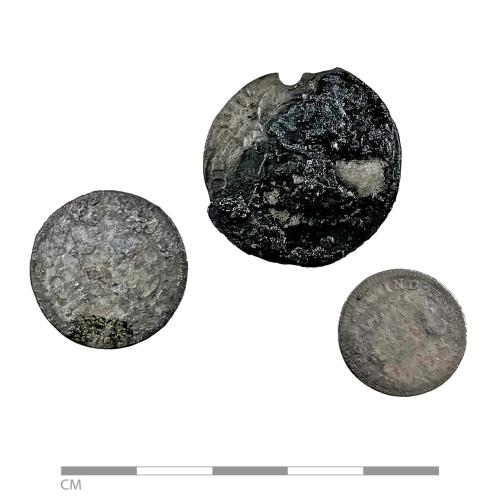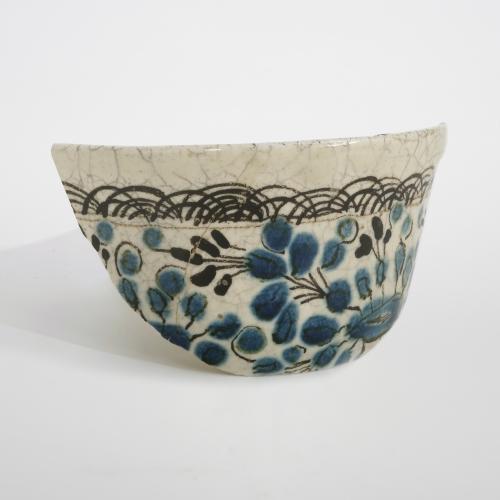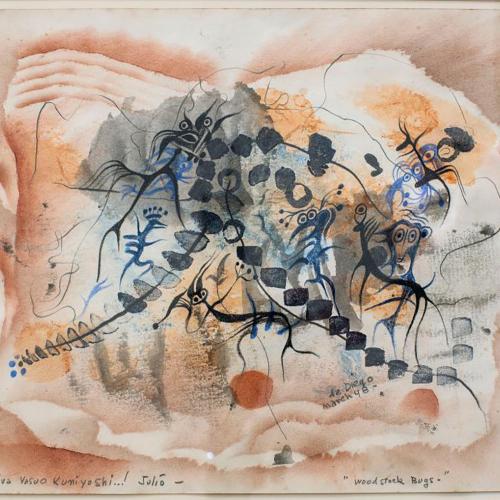
Hispanic Heritage Month: Highlights from the Collection
The History and Historic Archaeology collections at the New York State Museum document New York’s diverse history from the 17th century through the present day. The objects below are a few examples that help tell the histories of those with Hispanic and/or Latino ancestry in New York.
Mexican Coins from 18th Century New York
A curious collection of three silver coins milled in Mexico during the 1770s and 1780s was discovered in the 1980s by archaeologists excavating a late 18th-century cellar in lower Manhattan. It is not uncommon to find colonial Mexican coinage in New York as these coins were legal currency in the United States until 1857. These coins are illustrative of the reliance of the United States on the Spanish colonial world as they worked to develop a standard currency.
(Left)
Undated Charles III silver
NYSM Collection A-A2005.29A.1239.99
(Top Center)
Pierced 1774 Charles III, silver 2 Reales
NYSM Collection A-A2005.29A.1239.101
(Right)
1780s Charles III copper ½ Reales
NYSM Collection A-A2005.29A.1239.98
Polychrome painted majolica cup sherd, c. 1651–1664.
This beautiful ceramic cup is painted in a style likely attributed to a tradition called Puebla Polychrome, produced in Puebla Mexico beginning around 1650. Puebla potters drew on the earlier decorative motifs produced in Spain called Talavera Polychrome. Mexican potteries began producing majolica style pottery by the 1550s and their wares had largely supplanted the European types throughout the Caribbean by the 1630s.
The cup was discovered by Dr. Paul Huey during his early 1970s excavations at the 17th century Dutch West India Company outpost of Fort Orange, located at the present-day site of Albany, New York. It was recovered from the household refuse associated with the Hendrick Andriessen van Doesburgh house. It is possible that the cup found its way into the Van Doesburgh household via the Dutch trade in the Caribbean rather than an object brought from the Netherlands. The presence of this cup at Fort Orange illustrates the success of the Mexican pottery industry in the 17th century and the far-ranging distribution of these impressive wares throughout the Atlantic world.
NYSM Collection, A.FOR.1971.317.B
Puerto Rican pride buttons
Heritage buttons from the mid-1970s showed off Puerto Rican pride. Buttons were an inexpensive accessory to show one’s pride in their ethnic heritage. These were often sold at parades and fairs.
NYSM Collection, H-1978.26.20, H-1978.26.5, H-1978.26.24
Poster by Jacqueline Skiles, printed collaboratively by the Collective Graphics Workshop, c. 1971.
This poster was produced during a demonstration at the Mexican Consulate in New York City. The Collective Graphics Workshop was an artist collective, primarily focused on anti-war activism.
NYSM Collection, H-1991.99.197
Creative Women’s Collective Prints
These silkscreen prints were made by students at Creative Women’s Collective (CWC) workshops. The CWC was a New York City-based activist artists’ collective. Members used artistic skills to convey social justice messages, including women’s rights, immigrants’ rights, and peace. The CWC supported the neighborhood in which it was located through training and employment opportunities for neighborhood youth through a program funded by the Comprehensive Employment and Training Act (CETA). Many of these students were recent immigrants to New York City, and some came from countries ravaged by war and violence—the theme of peace appears often in their works.
“Libertad y paz,” photocopy and silkscreen print, c. 1980, Wilson Sarchi (an 18 year old immigrant from Columbia)
“Love Not War,” silkscreen print, c. 1986, José Garcia
“No Draft, No War, U.S. Out of El Salvador,” silkscreen print, c. 1980, Rebecca Karen Smith (a high school student)
NYSM Collection, H-1991.99.140, H-1991.99.144, H-1991.99.146
Watercolor by Julio de Diego
Versatile and prolific artist Julio de Diego was born in Spain and immigrated to the United States in 1924. He worked in a variety of media including painting, prints, watercolors, jewelry, ceramics, stage set design, and he even appeared in films. He deftly moved back and forth stylistically from cubism to expressionism to surrealism. Here he named his whimsical abstract forms “Woodstock Bugs” and dedicated the watercolor to fellow artist Yasuo Kuniyoshi, celebrating the village of Woodstock where both had studios.
Julio de Diego (1900–1979)
Woodstock Bugs, 1948
Watercolor on paper
NYSM, Historic Woodstock Art Colony: Arthur A. Anderson Collection
Gutierrez’ Barbershop / Peluquieria Española
These items belonged to Antonio Gutierrez who emigrated from Spain and acquired a barbershop in New York City in 1929. They are a part of a larger collection of items donated to the New York State Museum by his son, Miguel Gutierrez Granados, who also worked and operated the shop.
In 2005, the NYSM acquired the shop's fixtures and contents, most of which are on display in New York Metropolis Hall's City of Neighborhoods.
Visit the Gutierrez Barbershop / Peluquieria Español webpage to view additional photographs and learn more about the barberhop's history and the vital social and cultural role it played in New York City.
NYSM Collection, H-1981.85













